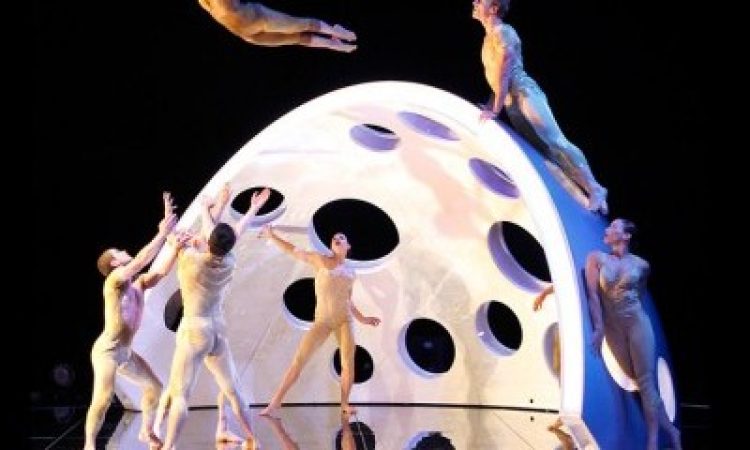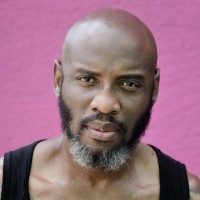When watching a dance performance, I expect moving bodies performing rehearsed movements. Sometimes texts, sets, and props are added to support the intention. This can either give the audience an entry point into the work being performed or merely heighten the theatrical experience for the viewer.
After seeing Diavolo’s “Architecture in Motion,” I questioned if some dance shows should be placed in the genre of performance art if the work relies heavily on sets, pageantry, prop manipulation, and acrobatics.
A part of Philadelphia International Festival of the Arts, Los Angeles-based dance company Diavolo brought with them magnificent sets, intricate lighting design, and performers with impeccably sculpted bodies. Artistic director Jacques Heim created worlds of fantasy and animation that were furnished with a giant vertical tube, a colossal crater filled dome, and a massive wall created by stacked boxes.
Fluid Infinities (2013) opened with a group of performers milling around the oversized tube, while three performers climbed through the opening at the top, scrambling down its side, to join them. As they edged toward center stage, a dimly-lit giant dome covered with fabric revealed itself before the fabric was slowly vacuumed by a crater in the dome. The bare dome became a magnetic field, pulling the dancers to its surface and through strategically placed holes around the dome’s shell.
While the architectural presence of the tube and dome provided a visually exciting backdrop, the performers’ jaw-dropping acrobatic acts boosted my viewing pleasure.
From atop the dome, the nimble movers sailed through the air, seemingly oblivious to what would cushion them. Though the acrobatics wowed, the element of surprise was diminished each time the catchers would set up their bed of arms to receive a plummeting body.
Diavolo’s performance made me wonder if theatre-going will soon be bombarded with technology, ruining the “live” experience. At the top of the show, artistic director Jacques Heim gave permission for the audience to take pictures and/or record videos with their cell phones. There were cheers from the seated crowd, but I didn’t think anyone would… at least not film for an extended time. Was I wrong!
A woman in front of me recorded the entire second act on her cell phone. The glare from the bright phone screen became a distraction, and I couldn’t help noticing the irony of viewing a live performance through a screen. Yes, she captured footage of the show on her phone, but she missed everything.
Diavolo reminded me of Pilobolus Dance Theatre – both in their approach to structuring movement and their use of stage sets to push physical boundaries. The experience was a testament to where dance could be heading with its reliance on tumbling passes, grandiose set pieces, and technology to draw people to the theatre. While the spectacle of these shows do their part in increasing ticket sales, I would argue that such a trend might diminish the legacy of a form that is rooted in the body. And while I have no interest in trading in concert dance for commercial acrobatics, I will keep Diavolo on my list of must-see entertainment…hopefully without the video recording of my seated neighbor.
Also presented on the bill was Cubicle.
Diavolo, Architecture in Motion, Fluid Infinities, Cubicle, Philadelphia International Festival of the Arts, Merriam Theater, April 14th, www.pifa.org, www.diavolo.org






